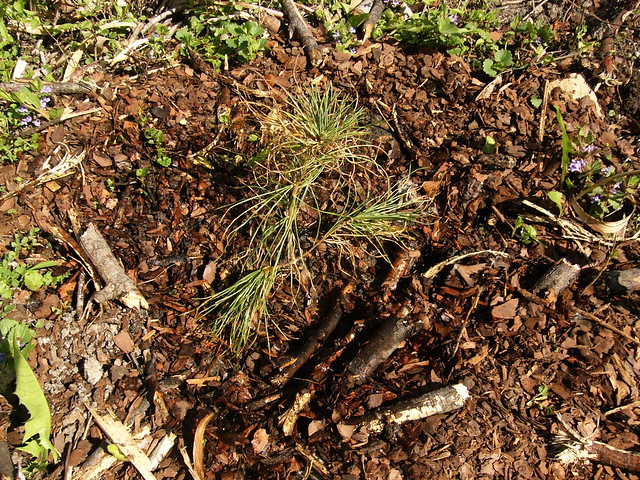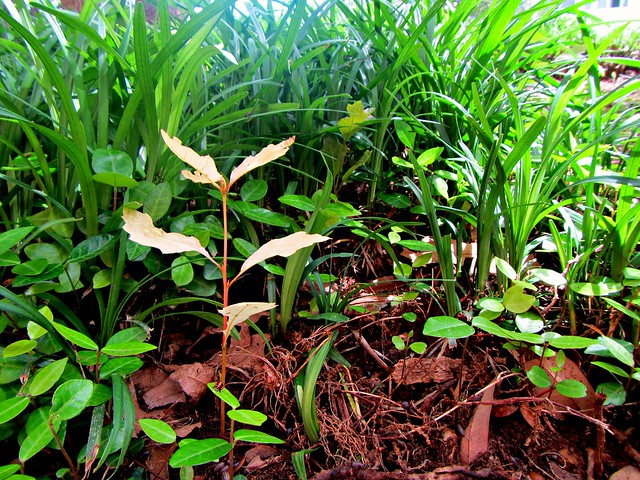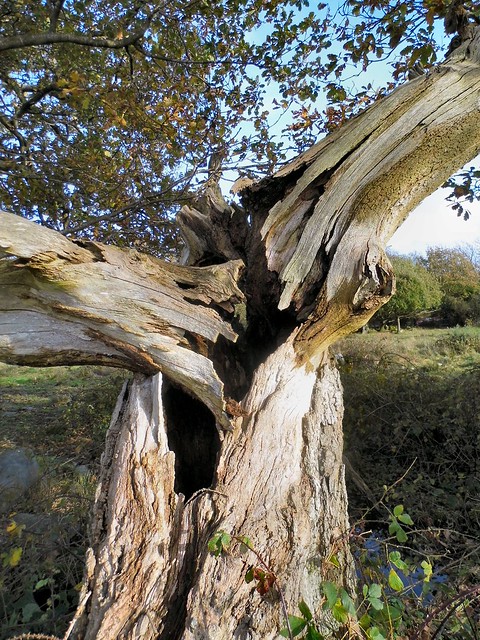Let's Learn Ecology!
In order to understand the modern day composition of the Adirondacks forests (and consequently, its past and its future), one must have a thorough grasp on the concept of ecological succession. Therefore, before exploring the Timeline of Disturbance and information about old-growth, let’s review a couple of key ecological concepts (if you are interested in a more complete discussion of forest ecology and succession, see Marchand’s Nature Guide to the Northeastern Forest):
|
Primary Succession: Primary succession occurs when an ecosystem begins from nothing; i.e. there is little more than bare rock or glacial till upon which to build a biological community. Thus, succession begins with plants that can tolerate very poor nutrient levels (because there are essentially none available in these areas). As this first round of pioneers die, their remains become the first organic matter in the soil. Then, plants with higher nutrient needs move in to capitalize on the now higher nutrient level, and the cycle continues until a solid, organic soil is formed. From there, the trajectory closely follows that of secondary succession.
|
|
|
Secondary Succession: Secondary succession requires a minimum organic soil layer to begin. This type of succession usually begins after some form of disturbance disrupts an intact ecological community (i.e., a tree falls down in a forest, or a forest fire burns a large tract of land). The now high light availability favors early successional species that grow quickly and capitalize on the new resources. Eventually, slower growing and longer lived species shade out this generally herbaceous first generation in favor of woody plants such as shrubs or faster growing deciduous trees. The pattern will continue until the plants converge on a climax community.
|
|
|
Pioneer Species: A pioneer species is any species that begins the successional cycle. These plants are usually characterized by high seed dispersal (and therefore are usually the first to colonize a disturbed site), high growth rate, and shade intolerance. By sacrificing the ability to reproduce in shaded conditions, they can better utilize high light intensity, growing quickly and vigorously. However, these species are usually unable to reproduce under their own shade and alter the environment in such a way that selects for later successional species.
|
|
|
Climax Species: A climax species is generally the last step in the successional process. These species are generally shade-tolerant and can therefore reproduce under their own shade. Thus, once established, the community composition will remain largely stable until some disturbance (natural or otherwise) creates an opening for the invasion of earlier successional species, and the cyclical process begins again.
|
|
|
Shade-intolerant: Shade-intolerant simply means that a seedling needs a certain amount of light to germinate and reach maturity. Shade-intolerant species generally cannot reproduce underneath a shaded canopy and are therefore found in early successional forests and along forest edges or in disturbed sites.
|
|
|
Shade-tolerant: Shade-tolerant implies the ability of a plant to reach maturity without full light access, i.e., underneath a tree canopy. These species are generally climax species that have the ability to reproduce under their own shade and thus create stability in the canopy composition.
|
|
|
Competition: Competition is, for lack of a better word, the competition for resources. In ecological terms, competition is the interaction between two or more species for similar nutrients. Such competition favors the development of “niches,” or a specified ecological role within a community. Species with similar niches will “compete” for dominance within that niche until one emerges victorious. Thus, competition ensures a diverse forest community in which each organisms specializes in a particular function.
|
|
|
|
Disturbance: A disturbance is any kind of rupture in the successional process, be it natural or anthropogenic. Patterns of disturbance can force an ecosystem to stay within a certain level of succession, never reaching a climax community. Disturbances instigated by humans significantly alter successional trajectory of ecosystems and in extreme cases can completely alter biological systems.
|
|
Evergreen versus Deciduous: Evergreen and deciduous have developed different strategies for survival. Deciduous trees take advantage of large nutrient and water availability by growing broad leaves that are able to absorb large amounts of sunlight and stimulate growth and energy storage. This fragile leaf comes at a cost, however: the broad leaf encourages water loss through respiration, and must be shed after every growing season. Thus, these trees invest large amounts of energy with hopes of large pay off. The evergreens essentially do the opposite: they invest small amounts of energy in year-round, frugal leaves that make up for their low surface area with a waxy cuticle that conserves water. Also, needles generally survive several years before dying and over their lifetime will absorb comparable amounts of energy to the broad leaves (Marchand).
|
|
Ecology of the Adirondack Forests:
With a basic understanding of ecology and ecological succession, the patterns of forest types in the Adirondacks become an intricate puzzle of biotic and abiotic factors constantly shaping a dynamic forest that is never quite in equilibrium. In the park, there are three major forest types principally determined by water and nutrient availability: (1) the hardwood forests, (2) the spruce-fir woodlands, and (3) the mixed forests. As discussed above, we know that the hardwood deciduous trees and the evergreen conifers have different skill sets and operate better under a different suite of environmental conditions. Thus, areas that have poor drainage (and thus, less free oxygen available in the soil) and few nutrients produce spruce-fir woodlands. In order for deciduous trees to gain a competitive advantage over the slow-growing conifers, they must have access to large energy reserves in the soil in order to produce large amounts of expendable foliage. Therefore, the hardwood forests tend to appear in areas with high nutrient availability and good drainage, where they can out-compete their conifer cousins. The mixed forests appear where there are neither enough nutrients nor enough oxygen in the soil for the deciduous trees to gain the advantage, but still enough for them to fight against conifer domination. The result is a mixed stand with deciduous trees growing in areas of higher disturbance where the light can more regularly penetrate the canopy and allow for their shade-intolerant seedlings to grow.
BONUS: Almost exclusive to the Adirondacks: Fir waves!
Fir waves (“waves” of dead trees that move up the sides of mountains) are exclusive to two regions in the world: Northern Appalachia (including the Adirondacks) and the mountains of Japan. In these two areas, a suite of factors cooperate to create an interesting ecological phenomenon. The fir waves are restricted to areas of boreal forest exclusively populated by balsam fir. Because of harsh environmental conditions including poor nutrient availability and strong, cold winds, trees exposed to the elements (along forest edges) cannot survive and die as a group, exposing the next row of trees to the harsh weather conditions that eventually leads to their death as well. As the process continues up the mountain side, trees begin to recover on the lower edge of the wave and grow vigorously to take advantage of the newly available nutrients and sunlight. The result is a homogenous, similarly aged forest competing for the same resources. As the nutrients run out, trees at the bottom of the slope lose the ability to withstand the harsh weather conditions and succumb. A new wave is born (Marchand 101).
Works Cited:
Marchand, P.J. 2010. Nature Guide to the Northern Forest: Exploring the Ecology of the Forests of New York, New Hampshire, Vermont, and Maine. Appalachian Mountain Club Books: Boston, MA.









